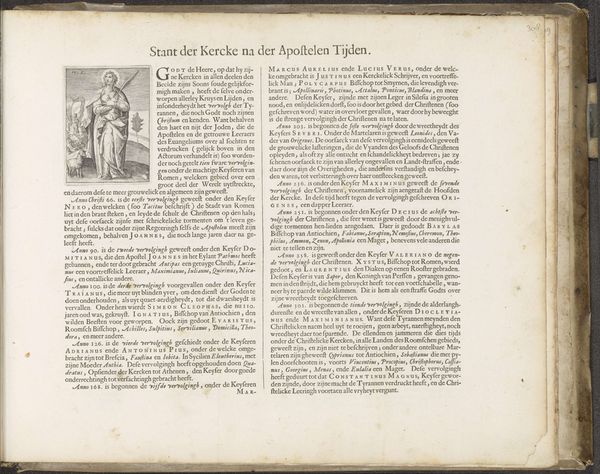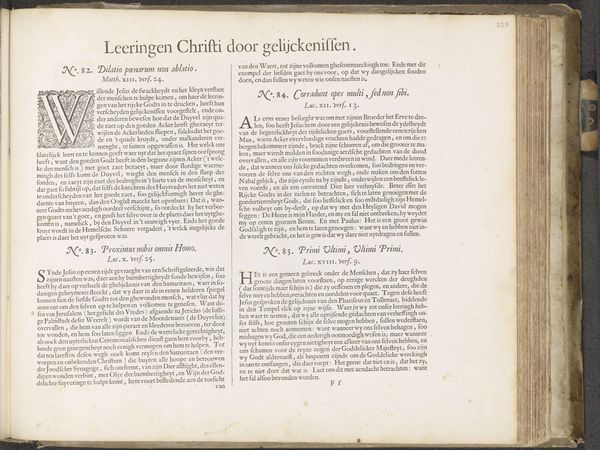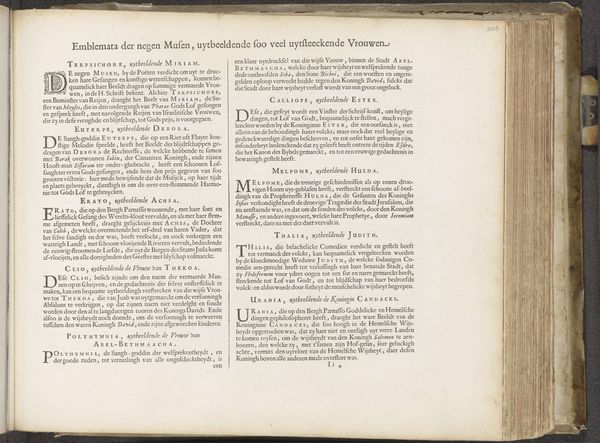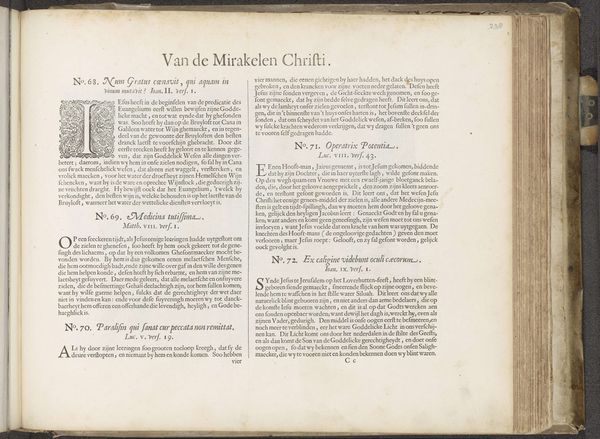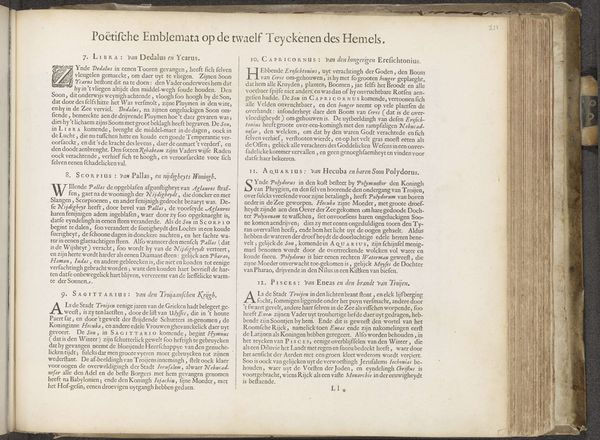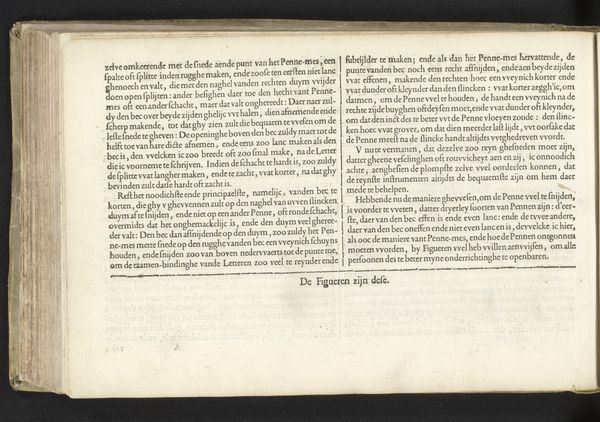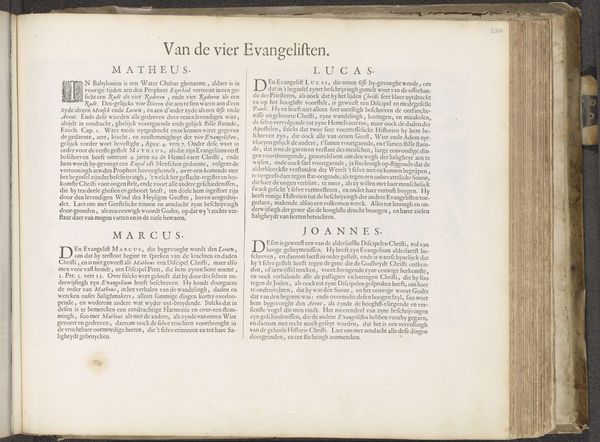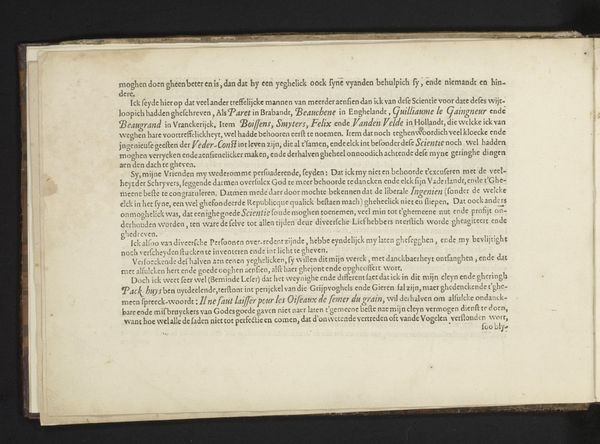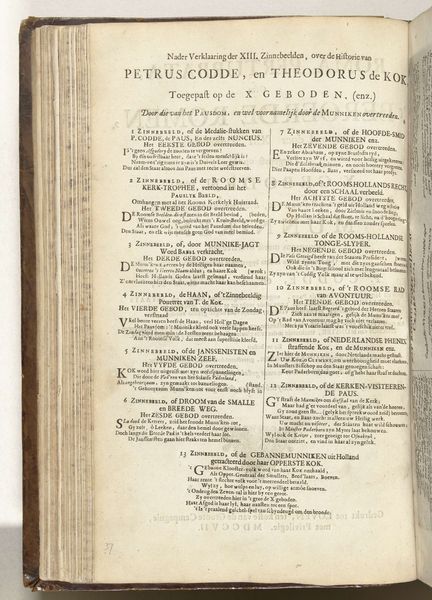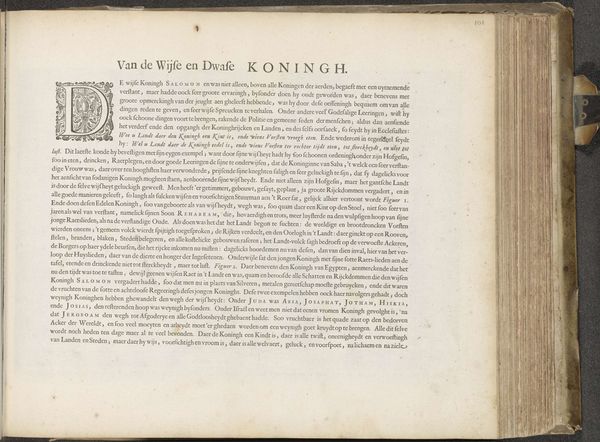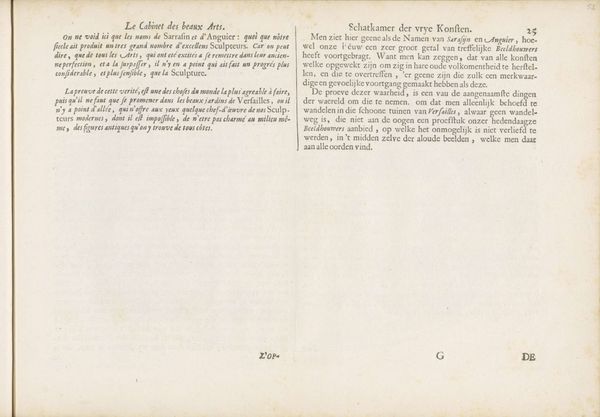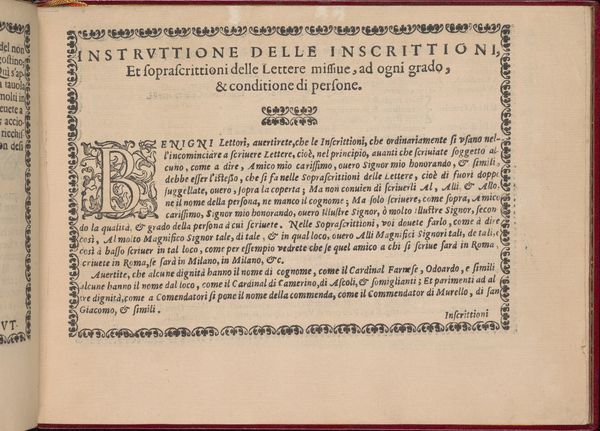
Acht toelichtingen bij negen voorstellingen over het leven, sterven en de opstanding van Christus 1653 - 1654
0:00
0:00
janphilipszschabaelje
Rijksmuseum
print, textile, paper
#
dutch-golden-age
#
parchment
# print
#
textile
#
paper
#
journal
#
watercolor
Dimensions: height 295 mm, width 370 mm
Copyright: Rijks Museum: Open Domain
Curator: Today we're looking at “Acht toelichtingen bij negen voorstellingen over het leven, sterven en de opstanding van Christus" which translates to "Eight explanations of nine scenes from the life, death, and resurrection of Christ." It’s a print by Jan Philipsz Schabaelje, dating back to 1653-1654, and it’s currently held at the Rijksmuseum. Editor: My first impression? It's very text-heavy! A dense block of script dominating the page, figures tucked in between the writing like annotations, more so than traditional illustrations. Curator: That's right. The prominence of the text points to its function. Consider this as an early form of illustrated news, disseminated in a society where literacy, while increasing, still had disparities along lines of class and gender. The selection of the printing process is also quite intentional, prioritizing accessibility, even as watercolors color some sections of this paper and textile object. Editor: Absolutely. And how does that influence our understanding of its reception? By emphasizing the textual explanations alongside the images, this print almost directs its viewers to process specific moral and political stances around the life, death, and resurrection of Jesus. It’s a mode for manufacturing faith. Curator: Yes, and it provides visual validation. Think about the period in which it was made. The Dutch Golden Age was not just about painting grand portraits. This form of art-making becomes vital for broadcasting particular religious perspectives. Who had access? Whose narratives were excluded or marginalized in the production and distribution of these prints? It also emphasizes how labor and artisanal skills can become tools for societal and even spiritual persuasion. Editor: Exactly. The very choice of paper and print signals that these texts can be disseminated much more widely. It shifts the focus from an elite form of artistic appreciation, tied to paintings and patronage, toward communal participation and interpretation. Curator: The visual design, despite its limitations in color, manages to evoke potent emotional responses in its readership. By juxtaposing religious motifs alongside passages designed to trigger moral contemplation, it weaves both image and narrative to reaffirm Christian ideologies during a crucial period of history. Editor: Examining the historical, material, and intellectual landscape interwoven into this artifact brings us closer to perceiving art not only as the expression of the individual but also the embodiment of the collective narrative. Curator: Precisely! We come away reminded that behind even the simplest image lie layers of influence, shaping not only art but our understanding of the world.
Comments
No comments
Be the first to comment and join the conversation on the ultimate creative platform.
